Discover Discover the Horror Podcast
Discover the Horror Podcast

112 Episodes
Reverse
Every now and again, the horror genre produces a film that becomes a bona fide classic. In 1980, director William Lustig and co-writer and star Joe Spinell teamed up to make what may be the defining film of the 42nd Street grindhouse era: Maniac. The film has it all, a serial-killing protagonist who scalps women while sobbing about his mother, buckets of gore from an early-career Tom Savini, and all the usual suspects of late-'70s Times Square: hookers, drugs, and utter despair. A remake, directed by Franck Khalfoun, written by Alexandre Aja, and starring Elijah Wood, arrived in 2012. This time, the action shifts to Los Angeles and leans more heavily into the mannequins that served as surrogate girlfriends in the original. Does it rise to the occasion and meet its predecessor on its own terms? We dig into that question, and much more, on this Twice Told Tales edition of the show. Films mentioned in this episode: The Avengers (2012), Basket Case (1982), Cannibal Holocaust (1980), Dawn of the Dead (2004), The Fly (1986), Friday the 13th (1980), The Godfather (1972), Halloween (1978), High Tension (2003), Inferno (1980), Jaws (1975), Last Horror Film (1982), Last House on the Left (1972), Maniac (1980), Maniac (2012), Pieces (1982), Taxi Driver (1976), Texas Chain Saw Massacre (1974), The Thing (1982), The Warriors (1979)
Count Dracula's Great Love (1973), Horror Rises from the Tomb (1973), Panic Beats (1983) We're finally back to discuss the wonderful cinematic world of Paul Naschy! Back in episode 21, we covered three different entries in Naschy's werewolf films. So this time out, we are covering three of his NON-werewolf titles. It's important to remind fans that while he was known for his Waldemar Daninsky werewolf films, he made plenty of other films, incorporating a bunch of different kind of monsters. And if you are familiar with more of his work, then what better time to revisit some of them, right? Making over a hundred titles in his career spanning decades, Paul Naschy loved the horror genre and made the kind of films he wanted to, giving fans a wide variety of well-known beasties, as well as ones we'd never seen before. While some might say they vary in quality, Naschy's passion never did, and he always put his heart and soul into each one of them. Films mentioned in this episode: Beast and the Magic Sword (1983), Count Dracula (1970), Count Dracula's Great Love (1973), Count Yorga (1970), Curse of the Devil (1973), Dracula (1974), Dr. Jekyll vs the Werewolf (1972), Frankenstein's Bloody Terror (1968), Frankenstein Meets the Wolf Man (1943), The Frenchman's Garden (1978), The Hanging Woman (1973), Horror Rises from the Tomb (1973), Howl of the Devil (1988), Hunchback of the Morgue (1973), The Mummy's Revenge (1975), The Night of the Executioner (1999), Night of the Werewolf (1981), Nightmare Castle (1965), Panic Beats (1983), People Who Own the Dark (1976), Santo vs Doctor Death (1973), She Killed in Ecstasy (1971), Snowbeast (1977), Vampyros Lesbos (1971), Vengeance of the Zombies (1973), The Wolf Man (1941)
Attack of the Crab Monsters (1957), Terrorvision (1986), and Uninvited (1988). That's right, folks! It's Turkey Time again, and we are celebrating our 5th episode dedicated to those wonderous missteps in cinematic history. They aimed for the stars, but dropped like frozen turkey chucked off a building! But as we always say, the only bad movie is a boring one. And these films are definitely not boring. Because once the credits roll, if you've been entertained, then how could it be considered bad??? So sit back and enjoy this episode, where we discuss giant telepathic crabs, a ravenous space creature beamed in through a brand-new state-of-the-art satellite dish, and, finally, a story about an experiment gone horribly wrong that leaves a mutant creature living inside a cat that just happens to end up on a luxury yacht with some criminals and college kids. How could that not spell fun? Films mentioned in this episode: A*P*E* (1976), Attack of the Crab Monsters (1957), Better Off Dead (1985), Blood Freak (1972), CarousHELL (2016), Creatures from the Abyss aka Plankton (1984), Creepshow 2 (1987), Death Ship (1980), Dracula vs Frankenstein (1971), Dr. Caligari (1989), Dungeonmaster (1984), Feast (2005), Friday the 13th: The New Blood (1988), Fright Night (1985), Fright Night II (1988), From a Whisper to a Scream (1987), From Beyond (1986), The Giant Claw (1957), Incredibly Strange Creatures Who Stopped Living and Became Mixed-Up Zombies!!? (1964), Inhumanwich! (2016), Just Before Dawn (1981), Kingdom of the Spiders (1977), Lady Frankenstein (1971), Little Shop of Horrors (1960), The Man with Two Brains (1983), Naked Gun (1988), Napoleon Dynamite (2004), Phantom of the Paradise (1974), Pit Stop (1969), Real Genius (1985), Re-Animator (1985), The Return (1980), Return of the Living Dead (1985), Robot Monster (1953), Running Scared (1986), Satan's Cheerleaders (1977), Satan's Sadists (1969), Sharknado (2013), Terrorvision (1986), Things (1989), The Undead (1957), Uninvited (1988), Videodrome (1983), Without Warning (1980)
Frankenstein Created Woman (1967), Frankenstein Must Be Destroyed (1969), Frankenstein and the Monster from Hell (1974) Continuing our quest to get through the rest of Hammer's Frankenstein films which starred Peter Cushing, we cover the last three titles that Hammer made. Cushing loved to play this character, and he's done it like no one ever had, or ever has. Along with the screenwriters, Cushing made this character his own, and really made him the real monster in this series. While these films might be well covered by others, sometimes we forget just how good some of these are, as well as what we might be missing the first time or two that we watched it. And as we've mentioned many times before, watching them in sequence in a relatively short time, more things can come to light. Films mention in this episode: Brides of Dracula (1960), The Bride of Frankenstein (1935), Curse of Frankenstein (1957), Curse of the Werewolf (1961), The Evil of Frankenstein (1964), The Exorcist (1973), Frankenstein Created Woman (1967), Frankenstein and the Monster from Hell (1974), Frankenstein Must Be Destroyed (1969), Horror of Dracula (1958), Horror of Frankenstein (1970), Kiss of the Vampire (1966), The Mummy (1959), Night of the Living Dead (1968), Peeping Tom (1960), Psycho (1960), Revenge of Frankenstein (1958), Rosemary's Baby (1968)
The Curse of Frankenstein (1957), The Revenge of Frankenstein (1958), and The Evil of Frankenstein (1964) What can you say about the Hammer Frankenstein films that hasn't been said before? Well, a lot, actually! In 1957, a relatively small, mostly unknown studio made a film that would forever change horror and kick off a cycle of sensual, bloody, and atmospheric fright flicks that would dominate the genre for around twenty years. To say that The Curse of Frankenstein is a classic is almost like saying that water is wet, but it is also a film that lives up to it's reputation. It and its sequels are films that not only deserve regular revisits, they also belong in more modern conversations about horror. While nearly all the films shard crewmembers and all but one were directed by Terence Fisher, one constant defined the series: Peter Cushing's mesmerizing take on Victor Frankenstein, equal parts gentleman and ghoul. On this episode we look at the first three films in the Cushing Frankenstein cycle, and in a very real way, make a pilgrimage to one of horror's holy places. We love these films and we hope that either you do too, or that you will by the time you are done listening. Films mentioned in this episode: The Bride of Frankenstein (1935), Corruption (1968), The Curse of Frankenstein (1957), The Devil-Ship Pirates 1964), Dracula vs Frankenstein (1971), The Evil of Frankenstein (1964), Frankenstein (1931), Frankenstein Must Be Destroyed (1969), Maniac (1963), Nightmare (1964), Paranoiac (1963), The Quatermass Xperiment (1955), Re-Animator (1985), The Revenge of Frankenstein (1958)
No matter what kind of horror fan you are, there's a good chance that you love the monsters. Whether it's from the Universal Classics, Hammer's colorful reinterpretations, the amazing creatures from Ray Harryhausen, to the no-classic aliens in Star Wars, monsters are a backbone of cinema, and arguably, are the backbone of horror. It's one of the things that we horror fans rally around, and love to discuss: from our favorites, to how some are designed, how they move, and everything in between. Oscar winning special makeup effects artist Howard Berger and author Marshall Julius have a new book out entitled Making Monsters: Inside Stories from the Creators of Hollywood's Most Iconic Creatures, so we asked them to be on our show to talk all about monsters, and those special memories that we all have from the films we love. Films mentioned in this episode: 2001: A Space Odyssey (1968), The 7th Voyage of Sinbad (1958), The Abyss (1989), An American Werewolf in London (1981), Creature from the Black Lagoon (1954), The Fly (1986), Frankenstein (1931), The Golden Voyage of Sinbad (1973), Gremlins (1984), The Hunchback of Notre Dame (1923), Indian Jones and the Temple of Doom (1984), Jason and the Argonauts (1963), Jurassic Park (1993), King Kong (1933), King Kong (1976), Night of the Living Dead (1968), Nosferatu (1922), Phantom of the Opera (1925), Planet of the Apes (1968), Raiders of the Lost Ark (1981), Say Anything (1989), Star Wars (1977), The Thing (1982), The Valley of the Gwangi (1969)
The Quatermass Xperiment (1955), Quatermass 2 (1957), Quatermass and the Pit (1967) Everyone knows the name Hammer Films (at least, we hope they do!) but most people associate it with gothic horror, particularly their reimagining of the Universal classic Frankenstein in The Curse of Frankenstein (1957). Yet Hammer had been around long before Peter Cushing breathed life into that first stitched-together corpse. Founded in the 1930s as a distribution company, the studio gradually moved into producing films, often adapted from popular TV and radio series. In 1953, the BBC aired a six-part serial, The Quatermass Experiment. Hammer quickly recognized its potential, adapted it into a feature film, and in doing so set itself firmly on the path toward becoming "the studio that dripped blood." In this episode, we cover all three Quatermass films. While they lean more toward science fiction than Hammer's later gothic output, they are steeped in horror... and we think they're well worth your time. Films mentioned in this episode: And Now the Screaming Starts (1973), Asylum (1972), Brides of Dracula (1960), The Curse of Frankenstein (1957), Curse of the Werewolf (1961), Dracula Prince of Darkness (1966), Dr. Jekyll and Sister Hyde (1971), The Gorgon (1964), Horror of Dracula (1958), I Married a Monster from Outer Space (1958), The Incredible Melting Man (1977), Inhumanwich! (2016), Invasion of the Body Snatchers (1956), It Came from Beneath the Sea (1953), It Conquered the World (1956), Journey to the Center of the Earth (1959), Legend of the Seven Golden Vampires (1974), Masque of the Red Death (1964), Monster Club (1981), Nineteen Eighty-Four (1954), Pit Stop (1969), Quatermass Xperiment (1955), Quatermass II (1957), Quatermass and the Pit (1967), Rasputin the Mad Monk (1966), Revenge of Frankenstein (1958), Scars of Dracula (1970), The Stone Tape (1972), The Vampire Lovers (1970), Vault of Horror (1973), X – The Unknown (1956)
The Ghastly Ones (1968), The Man with Two Heads (1972), and Carnage (1984) There are not many filmmakers like Andy Milligan. Sure, there were a lot of no-budget independents during Milligan's era that somehow got their finished pictures to play theaters and released on home video. But there weren't many whose real life was almost as terrifying as the films they made. But Andy Milligan would fit neatly into that category. Making over 30 pictures in almost 25 years, with some of the most outrageous and memorable titles, he still remains very close to obscurity. But he does have some fans out there. In fact, in September of 2021, Severin Films released The Dungeon of Andy Milligan, a box set that included over a dozen of his films, packed with extras. As that set has lived on fan's shelves for a while now, it seemed a good time to take a look into this strange filmmaker and three of his films. But a warning... his films are not for everyone. Some quirky critics refer to them as high school stage plays that were filmed. They can be mean. Talky. Bizarre camerawork. And pretty shoddy makeup. Nonetheless, they still have a charm to them… to some fans, at least. So take your next steps with caution, and as the saying goes, "Well... we warned you." Films mentioned in this episode: Blood (1973), Bloodthirsty Butchers (1970), The Body Beneath (1970), Carnage (1984), Depraved (1967), The Degenerates (1967), Dr. Jekyll and Mr. Hyde (1932), Dr. Jekyll vs. The Werewolf (1972), Edge of Sanity (1989), Frankenstein (1931), The Ghastly Ones (1968), House of Seven Belles (1979), Legacy of Blood (1978), Mad Ron's Prevues from Hell (1987), The Man with Two Heads (1972), Pelvis (1977), The Promiscuous Sex (1967), The Rats Are Coming! The Werewolves Are Here! (1972), Torture Dungeon (1969)
A Company of Wolves (1984), Nightbreed (1990), Errementari (2017) As horror fans, we might not really think about the amount of horror elements that are in other sub-genres, such as fantasy. Sure, we all know titles like Conan the Barbarian (1982) that has a guy who turns into a giant snake, or Legend (1985) where one of the main characters is some sort of demon or devil, do those elements make it a horror film? We all know that horror is used in many different genres of films, even some where the filmmakers themselves go out of their way to make sure to define it NOT as horror. But we know. But when it comes to Fantasy / Horror, that's where the story might be based on fairy tales or folklore, and definitely has some elements of horror in there, either in content or maybe just characters. The line can get kind of blurry. But we also know that if its entertaining, then does it really matter? Take a listen as we discuss 3 titles that we all felt hit the Fantasy / Horror sub-genre, for a variety of reasons. Tune in and find out why. Titles mentioned in this episode: Army of Darkness (1992), Beastmaster (1982), A Company of Wolves (1984), Conan the Barbarian (1982), The Curse of Frankenstein (1957), The Crying Game (1992), The Devil's Backbone (2001), Don't Be Afraid of the Dark (2010), Errementari (2017), Eyes of Fire (1983), Frankenstein (1931), Freaks (1932), Häxan (1922), Hellboy (2004), Hellraiser (1987), In Dreams (1999), Interview with the Vampire (1994), Jason and the Argonauts (1963), Krull (1983), Legend (1985), Lord of Illusions (1995), Masters of the Universe (1987), Nightbreed (1990), Pan's Labyrinth (2006), Phantasm (1979), The Picture of Dorian Gray (1945), Sword and the Sorcerers (1982), Suspiria (1977)
If you've been to a few horror conventions over the years, you've probably noticed all the artists showcasing their work. Do you ever stop to browse, flipping through their illustrations and taking in the different visions of horror they bring to life? These artists set up hoping to catch the eye of fans wandering past, sharing their unique takes on monsters, movies, and macabre ideas. One of those artists is Don England. For decades, Don has been a fixture at conventions, known for his striking pen-and-ink style. His work is not only distinctive, it's consistently excellent. We've known Don for many years, and like us, he's a lifelong horror fan. That's why we invited him onto the show- to talk not just about his love of horror, but also his art, his inspirations, and to give fans a peek into what it takes to be a working artist in the convention scene. We also dive into his latest project, Late Night Snack, a classic (but high quality) zine filled with his artwork, essays on movies, short fiction, a comic, and much more. Films mentioned in this episode: Alice, Sweet Alice (1976), An American Werewolf in London (1981), The Big Bird Cage (1972), Blood for Dracula (1974), Cannibal Ferox aka Make Them Die Slowly (1981), Children Shouldn't Play with Dead Things (1972), Curse of Frankenstein (1957), Curse of the Werewolf (1961), Dog Soldiers (2002), Flesh for Frankenstein (1973), Frankenstein (1931), Frankenstein Meets the Wolf Man (1943), Gut-Pile (1998), Headless Eyes (1971), The Howling (1981), Indiana Jones and the Temple of Doom (1984), Jacker (1993), Jacker 2: Descent to Hell (1996), Mr. Sardonicus (1961), Night of the Living Dead (1968), Phantasm (1979), Satanico Pandemonium (1975), Shogun Assassin (1980), Texas Chain Saw Massacre (1974), Vampire Lovers (1970), Wolfen (1981), The Wolf Man (1941), Zombie (1979)
Children Shouldn't Play with Dead Things (1972), Deathdream (1974), Black Christmas (1974) Director Bob Clark will probably always be remembered for his now classic holiday film, A Christmas Story (1983), released the same year as his previous film, Porky's, which is one of the raunchiest sex comedies of that era! But he started off making horror films, 3 of them in particular, before he moved on to making films in just about every other sub-genre. As you can imagine, it is these 3 horror films that we are going to discuss on this episode. One of them set many of the standards of what would be known as a slasher film, while the others have two very different take on zombies. All made on low to moderate budgets, but still are still so well made, it's a shame that Clark didn't continue on in the horror genre. Maybe that's why he's not remembered as much as names like Carpenter, Cronenberg, or Craven. And that's why we're discussing it now! Films mentioned in this episode: Baby Geniuses (1999), Black Christmas (1974), Black Christmas (2006), Black Christmas (2019), Blood Orgy of the She-Devils (1973), Born on the 4th of July (1989), The Brood (1979), Cat People (1982), Children Shouldn't Play with Dead Things (1972), A Christmas Story (1983), Deathdream (1974), Deranged (1974), Duel (1971), Halloween (1978), Hereditary (2018), Incredibly Strange Creatures Who Stopped Living and Became Mixed-Up Zombies (1964), Jaws (1975), Last House on the Left (1972), Murder by Decree (1979), Popcorn (1991), Porky's (1981), Porky's II: The Next Day (1983), Prom Night (1980), Return of the Living Dead (1985)
Better grab something to write with before you hit play on this one. In this extra-long episode, we dive into a variety of horror sub-genres and each pick a title that we think defines that category. Not necessarily the best film, but one that captures the essence of the sub-genre in a meaningful way. To help us take on this ridiculously huge (but fun) challenge, we've brought back Aaron Christensen—aka Dr. AC—to join the conversation. If you're new to the genre, this one's especially for you. If you've been around a few years (or decades) we think the conversation is still worth your time, and we hope that you consider giving a few of these a revisit. Time to start that new watchlist! All set? Notes ready? Coffee or energy drink in hand? Then hit play! Titles mentioned in this episode: 7th Voyage of Sinbad (1958), Abbott & Costello Meet Frankenstein (1948), Abbott & Costello Meet the Mummy (1955), Alien (1979), Army of Darkness (1992), Audition (1999), Bad Taste (1987), Baskin (2015), The Beyond (1981), Black Christmas (1974), Black Sabbath (1963), Blair Witch Project (1999), Braindead aka Dead Alive (1992), Bride of Frankenstein (1934), Bring Her Back (2025), Cannibal Holocaust (1980), Carnival of Souls (1962), Children Shouldn't Play with Dead Things (1972), Creature from the Black Lagoon (1954), Creepshow (1982), Cruel Jaws (1995), Curse of Frankenstein (1957), The Devil's Wedding Night (1973), Dracula (1931), Evil Dead 2 (1987), The Exorcist (1973), Fight Club (1999), Frankenstein (1931), Frankenstein Must Be Destroyed (1969), The French Connection (1971), Gamera vs. Barugon (1966), The Giant Claw (1957), Godzilla (1954), Godzilla vs. Hedorah aka Godzilla vs the Smog Monster (1971), Ju-on: The Grudge (2002), Guinea Pig 2: Flower of Flesh and Blood (1985), The Haunting (1963), Hellraiser (1987), Hereditary (2018), Horror of Dracula (1958), Horror Rises from the Tomb (1973), The Host (2006), The Incredibly Strange Creatures Who Stopped Living and Became Mixed-Up Zombies (1964), Island of Lost Souls (1932), It Follows (2014), Jacob's Ladder (1990), Jaws (1975), King Kong (1933), Kwaidan (1964), Lair of the White Worm (1988), Let's Scare Jessica to Death (1971), The Monster (2016), Nekromantik (1988), Nightbreed (1990), Night of the Living Dead (1968), One Missed Call (2003), Onibaba (1964), Paranormal Activity (2007), Paranormal Activity 2 (2010), Paranormal Activity 3 (2011), Phantasm (1979), Pieces (1982), Possession (1981), Psycho (1960), Pumpkinhead (1988), The Raven (1963), Re-Animator (1985), Repulsion (1965), Return of the Living Dead (1985), Ringu (1998), The Ritual (2017), Rosemary's Baby (1968), The Sadness (2021), Satan's Sadists (1969), Saw (2004), Scream 5 (2013), Scream VI (2023), Seeding of a Ghost (1983), The Seventh Curse (1986), Shatter Dead (1994), Shaun of the Dead (2004), The Shining (1980), Suspiria (1977), Terrified (2017), Terrifier (2016), Tetsuo (1989), Texas Chain Saw Massacre (1974), The Thing (1982), Things (1989), Tombs of the Blind Dead (1972), Toxic Avenger (1984), Tucker and Dale vs. Evil (2010), The Ugly Stepsister (2025), Uzimaki (2000), Vampyros Lesbos (1971), Viy (1967), What We Do in the Shadows (2014), When Evil Lurks (2023), The Wicker Man (1973), Young Frankenstein (1974)
That's right . . . we made it to episode 100! Taking a nod from Fangoria Magazine from back in the day, when they would put out their annual "Bloody Best Of" issue, we're going to follow suit (in a way) by revisiting favorite moments from our previous 99. When we published our first episode back on Oct. 5th, 2021, who knew we were going to make it this far? But we can honestly say that hearing all the positive feedback from you, our listeners, and hearing that you are seeking out films because we talked about them, seeing them either for the first time, or maybe seeing more of them a second or third time around, really does make all the work we put into each show worth it. And has us excited to bring you another 100. So we have much more in store for you, but for now, sit back and enjoy some highlights from past shows, as well as learning once again why keep this going, and why we all will never stop Discovering the Horror! Films mentioned in this episode: 3 on a Meathook (1972), Accion Mutante (1993), Angel Heart (1987), Army of Darkness (1992), Blood Freak (1972), Class of Nuke 'Em High Part II: Subhumanoid Meltdown (1991), A Cold Night's Death (1973), The Cursed (2021), Day of the Beast (1995), Evil Dead 2 (1987), The Exorcist (1973), Frankenstein (1931), Hell of the Living Dead (1980), Invasion of the Body Snatchers (1956), Juan of the Dead (2011), Killdozer (1974), Mark of the Wolfman aka Frankenstein's Bloody Terror (1967), Nekromantik (1988), The Norliss Tapes (1973), Salem's Lot (1979), Snowbeast (1977), Sugar Hill (1974), Texas Chainsaw Massacre (2022), This House Possessed (1981), Wild Zero (1999), Witching and Bitching (2013), Zombie (1979)
Fifty years ago, a film was released that literally changed the world. Jaws transformed the way people think about going into the water and revolutionized how studios make movies, effectively creating what we now call the "summer blockbuster." Its influence is still felt five decades later, by both fans and filmmakers alike. And there's a reason for that: Jaws is just that good. In this episode, we take a deep dive into the film and explore the impact it's had on us (especially a couple of us who were profoundly shaped by it) as well as on the movie industry at large. People often talk about the idea of a "perfect movie," one that couldn't be improved. And while Jaws faced plenty of production problems (like the famously uncooperative mechanical shark), the creative solutions to those problems ended up making the film even stronger. Films mentioned in this episode: 10 (1979), 47 Meters Down (2017), Barracuda (1978), The Beast (1996), Creature (1998), Cruel Jaws (1995), Dawn of the Dead (1978), Dawn of the Dead (2004), The Deep (1977), Deep Blood (1989), Deep Blue Sea (1999), Devilfish (1984), Duel (1971), The Exorcist (1973), Feast (2005), Frankenstein (1931), Friday the 13th (1980), The Giant Claw (1957), Grizzly (1976), Humanoids from the Deep (1980), The Island (1980), Jaws (1975), Jaws 2 (1978), Jaws 3-D (1983), Jaws: The Revenge (1987), The Last Shark aka Great White (1981), Mako: Jaws of Death (1976), The Meg (2018), Open Waters (2003), Orca (1977), Piranha (1978), The Shallows (2016), Sharknado (2013), Star Wars (1977), Tentacles (1977), Tintorera: Killer Shark (1977)
The Blob (1958) & The Blob (1988) Continuing our theme of taking a deep dive into an original film and its remake, this time we're looking at a pair with exactly 30 years between them: The Blob, from 1958, and its 1988 remake. A lot had changed in those three decades, especially on the technical side, with advancements in special makeup effects definitely upping the ante on what we see on screen. But the remake also retains much of the same small-town feel and trappings of the original. With these two entries, it's interesting to see the similarities just as much as how the remake plays out as its own creature; sometimes winking at the original, but ultimately leaving its own gelatinous footprint. For those out there that love to hate on remakes, here's yet another pair that break the mold and had given us two entertaining entries. Sit back and enjoy! Films mentioned in this episode: 4-D Man (1959), Beware! The Blob (1972), The Beyond (1981), The Blob (1958), The Blob (1988), The Brood (1979), Dark Star (1974), Daughter of Horror (1955), Day the Earth Stood Still (1951), Dinosaurus! (1960), Equinox (1970), Eraserhead (1977), Eyes of Laura Mars (1978), The Fly (1986), Forbidden Planet (1956), Fright Night 2 (1988), Funeral Home (1980), Giant Gilla Monster (1959), Ghost of Dragstrip Hollow (1959), The Horror at Party Beach (1964), I Was a Teenage Frankenstein (1957), I Was a Teenage Werewolf (1957), Jaws (1975), Little Shop of Horrors (1986), Master of Horror (1965), Nightbreed (1990), Nightmare on Elm Street 3: Dream Warriors (1987), Return of the Living Dead (1985), Robocop (1987), Rock Rock Rock! (1956), Scanners (1981), Schlock (1973), Scream (1996), Them (1955), The Thing (1982), Videodrome (1983)
There have been many horror writers that have been important to the genre, but few have had the outsized impact of the one and only Chas. Balun. Whether it was his work in Fangoria, Gorezone, or his own magazine Deep Red, even if you didn't see his name at the head of the article, you knew it was him within a few sentences, by either by the tone of the writing, or maybe the films he was covering. Chas' style was humorous and more than a little confrontational, but he was always waving the flag in support of movies that he felt were important and hadn't received enough attention. Sure, they tended to be on the gory side, but for Chas. it wasn't just about the gore. Not entirely, anyway. While the three of us knew his work and the impact it had on us personally, for this very special episode, we felt we needed to talk with other folks who were just as impacted by him, and also knew him personally. In the second half of the show, you'll hear from John Szpunar, author of Xeroxferox: The Wild World of the Horror Film Fanzine and Blood Sucking Freak: The Life and Films of the Incredible Joel M. Reed; Art Ettinger, editor at Ultra Violent magazine; and finally Shawn Lewis, creator of Rotten Cotten and Eibon Press. They all share their own stories of Chas, and we all discuss the profound the impact Chas. had on us and on the horror genre in general. Don't miss this one! Films mentioned in this episode: Abomination (1988), Bad Taste (1987), The Beyond (1981), Beyond the Darkness (1979), Blood Sucking Freaks (1976), Blue Velvet (1986), Braindead (1992), Bug (1975), Cannibal Holocaust (1980), City of the Walking Dead (1980), Dellamorte Dellamore (1994), The Exorcist (1973), Friday the 13th (1980), Guinea Pig 2: The Flower of Flesh and Blood (1985), Hell of the Living Dead (1980), Last House on Dead End Street (1973), Last House on the Left (1972), Mad Ron's Prevues from Hell (1987), The Nest (1987), Night of the Demon (1980), The Omen (1976), Pieces (1982), Splatterfest Exhumed (2024), Texas Chain Saw Massacre (1974), Tombs of the Blind Dead (1972), Zoltan: Hound of Dracula (1977), Zombie (1979)
A Taste of Evil (1971), Snowbeast (1977), This House Possessed (1981) We're back on the small screen for our fourth dive into the world of made-for-TV horror—which should tell you something: we love these things. Maybe it's nostalgia from growing up in an era when you couldn't stream whatever you wanted, whenever you wanted. Or maybe it's because some of these films were just plain good—tight, creepy little stories that managed to leave a mark. This time around, we're not talking about the crown jewels of the genre, but rather three solid, middle-of-the-pack entries: well-made, weirdly memorable, and wildly watchable. You've got disturbed minds, ski lodge mayhem, and a haunted house that's a little too into you. If the stories don't grab you, the casts just might. Films mentioned in this episode: 1941 (1979), Abominable (2006), Alien (1979), Amityville Horror (1979), Asylum (1972), Beetlejuice (1988), Beyond the Door (1974), Blazing Saddles (1974), Butcher Baker, Nightmare Maker (1981), City of the Dead (1960), City Slickers (1991), The Curse of Frankenstein (1957), Don't be Afraid of the Dark (1973), Dark Night of the Scarecrow (1981), Devil Dog: Hound of Hell (1978), The Devil's Daughter (1973), Double Indemnity (1944), Drag Me to Hell (2009), Duel (1971), Frankenstein: The True Story (1973), Halloween (1978), House by the Cemetery (1981), House that Wouldn't Die (1970), Horror of Dracula (1958), I, Desire (1982), The Dirty Dozen (1967), Jaws (1975), A Nightmare on Elm Street (1984), Night of the Creeps (1986), The Night Stalker (1972), The Night Walker (1964), Pat Garrett & Billy the Kid (1973), Planes, Trains, and Automobiles (1987), Psycho (1960), Re-Animator (1985), Salem's Lot (1979), Satan's School for Girls (1973), Scream of Fear (1961), Shriek of the Mutilated (1974), Snowbeast (1977), Strange and Deadly Occurrence (1974), Suspiria (1977), A Taste of Evil (1971), Three Stooges Meet Hercules (1962), This House of Possessed (1981), The Tingler (1959), Trilogy of Terror (1975), Videodrome (1983)
Black Sunday (1960), Blood and Black Lace (1964), and A Bay of Blood (1971) There are films by certain directors that are truly iconic—classics of the genre we sometimes assume everyone has already seen. But it's easy to forget that, right now, there are fans just beginning their journey into horror. Whether due to age or a newfound curiosity, they're taking their first steps into the genre. For those unfamiliar with him, we'd like to introduce one of horror's true maestros: Mario Bava. And for those already acquainted with his work, maybe it's time for a revisit—to once again be stunned by what he brings to the screen. If it's been a few years, you may find yourself seeing things in a whole new way. That's one of the beautiful things about cinema. The three films we've chosen highlight important parts of Bava's career and show how his work helped shape entire subgenres—from gothic horror to giallo to the slasher film. Whether you're discovering him for the first time or coming back for a fresh look, these films are a perfect place to begin. One quick correction: Edgar Wallace was a British writer, not American. Films mentioned in this episode: Baron Blood (1972), A Bay of Blood (1971), Black Sabbath (1963), Black Sunday (1960), Blood and Black Lace (1964), Caltiki the Immortal Monster (1959), The Church (1989), Creature with the Blue Hand (1967), Curse of the Crying Woman (1963), Curse of Frankenstein (1957), Danger: Diabolik (1968), The Day the Sky Exploded (1958), Death Walks at Midnight (1972), Death Walks in High Heels (1971), Deep Red (1975), The Demon (1982), Demons (1985), Django Kill…If You Live, Shoot! (1967), Dr. Goldfoot and the Girl Bombs (1966), Dr. Jekyll and Mr. Hyde (1932), Erik the Conqueror (1961), Eyeball (1975), The Four of the Apocalypse (1975), Frankenstein '80 (1972), Frankenstein Island (1981), Friday the 13th (1980), Friday the 13th (1981), The Giant of Marathon (1959), The Girl Who Knew Too Much (1963), The Great Silence (1968), Hatchet for a Honeymoon (1970), Hercules in the Haunted World (1961), Horror of Dracula (1958), Inferno (1980), I Vampiri (1957), Knives of the Avenger (1966), Long Hair of Death (1964), Night Child (1975), Once Upon a Time in the West (1968), Planet of the Vampires (1965), Psycho (1960), She (1965), Shock (1977), Suspiria (1977), Thunderball (1965), The Toolbox Murders (1978), Torso (1973), The Whip and the Body (1963), Your Vice is a Locked Room and Only I Have the Key (1972)
As horror fans, it's hard enough trying to keep up with all the movies—let alone the memorabilia and collectibles—but just imagine having to live with one of us! In this episode, we've invited our wives onto the show to share their perspectives—not just on living with a slightly obsessive fan, but on how they've come to embrace the genre themselves. You'll hear how they became fans in their own right, and what kinds of films still give them the shivers. As you'll learn, being a horror fan has evolved into a shared experience—a communal passion that binds us together. While we might not all love the same titles, we all agree on one thing: this genre rules. We welcome Kat AuBuchon, Jenn Glonek, and Dawn Kitley as they join us to help Discover the Horror! Films Mentioned in this episode: August Underground (2001), August Underground's Mordum (2003), Cannibal Ferox (1981), Carcinoma (2014), Deadly Games aka Dial Code Santa Clause (1989), Demoniacs (1974), The Descent (2005), Flesh for Frankenstein (1973), Four Flies on Grey Velvet (1971), Frankenstein (1931), Friday the 13th (1980), Funny Games (1997), The Godfather (1972), Gods of the Deep (2023), Godzilla (1954), Halloween (1978), Halloween II (1981), Halloween V: The Revenge of Michael Myers (1989), Halloween: The Curse of Michael Myers (1995), Hard Ticket to Hawaii (1987), High Tension (2003), Hostel (2005), Human Centipede (First Sequence) (2009), Inside (2007), Longlegs (2024), Mandy (2018), Nekromantik (1988), A Nightmare on Elm Street (1984), Psycho (1960), Oddity (2024), One Missed Call (2008), Rambo: First Blood Part II (1985), The Redsin Tower (2006), The Rule of Jenny Penn (2025), Salo, or the 120 Days of Sodom (1975), Scream (1996), A Serbian Film (2010), Session 9 (2001), Sleepaway Camp (1983), Society (1989), Sting of Death (1966), The Substance (2024), The Taking of Deborah Logan (2014), Terrifier (2016), Terror Firmer (1999), The Texas Chain Saw Massacre (1974), The Thing (1982), Three on a Meathook (1972), Tromeo and Juliet (1996), Two Evil Eyes (1990), Without Warning (1980), Z.A.A.T. (1971)
Hardware (1990), Death Machine (1994), and Event Horizon (1997) The 1990s are often thought of as a decade of dread for horror fans—not because of what was on the screen, but because nothing good supposedly came out of it. Or at least, that's the typical response. But as we continue down the path to Discover the Horror, we're starting to realize that what we remember about the past isn't always accurate—whether it's based on our own memories or what we were told. When you really dig into those ten years, there's actually a lot of great stuff that came out—even just here in the U.S. And when you look beyond to international horror, it gets even better. Browse through the list and you're bound to say, "Oh yeah, I forgot about that one." In this episode, we decided to tackle that decade and picked three titles that, as it turns out, share some very similar themes. And we think all three are well worth watching. Films mentioned in this episode: Alien (1979), Aliens (1986), Batman Returns (1992), The Blair Witch Project (1999), The Boneyard (1991), Braindead (1992), Bram Stoker's Dracula (1992), Candyman (1992), Cronos (1992), Day of the Dead (1985), Death Machine (1994), Dellamorte Dellamore (1994), The Descent (2005), Dr. Giggles (1992), Dust Devil (1992), Event Horizon (1997), Evil Dead 2 (1987), The Exorcist (1973), Faces of Death (1978), Freeway (1996), Goodfellas (1990), Godzilla (1998), Gravity (2013), Halloween (1978), Halloween H20 (1998), Hardware (1990), Hellraiser (1987), Hellraiser III: Hell on Earth (1992), High Tension (2003), I Know What You Did Last Summer (1997), In the Mouth of Madness (1994), Judge Dredd (1995), Jurassic Park (1993), Lord of Illusion (1995), Mary Shelley's Frankenstein (1994), Meet the Feebles (1989), Mimic (1997), Misery (1990), The Mummy (1999), Nightbreed (1990), Pulp Fiction (1994), The Princess Bride (1987), Reign of Fire (2002), The Resurrected (1991), Return of the Living Dead (1985), Return to Splatter Farm (2020), Ringu (1998), Scream (1996), Scream 2 (1997), The Silence of the Lambs (1991), Star Wars (1977), Thelma & Louise (1991), The Thing (1982), Valentine (2001), Warning Sign (1985), Willow (1988)


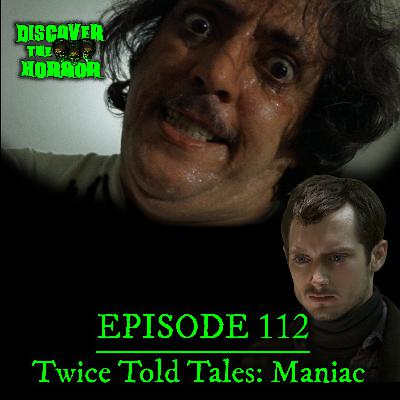
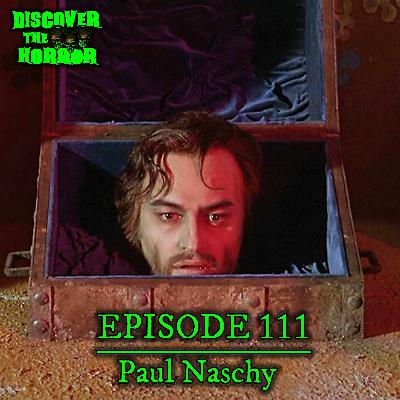
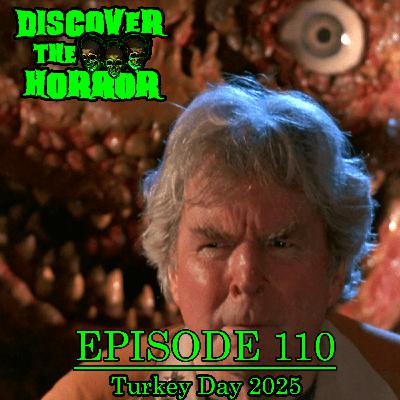
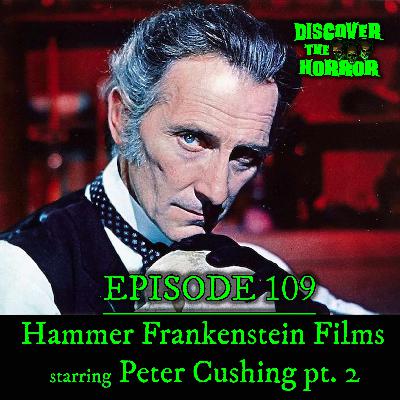

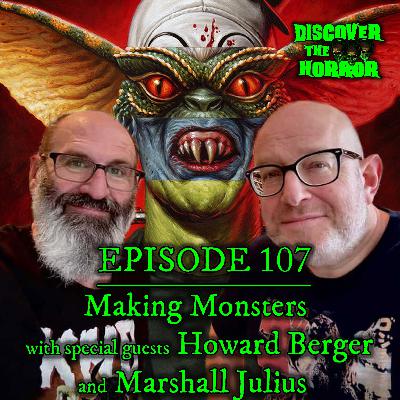


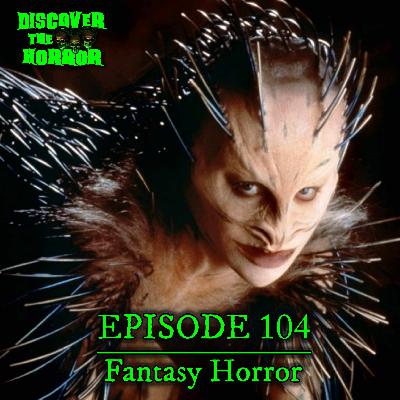
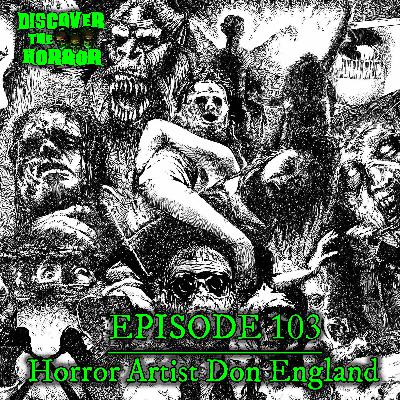




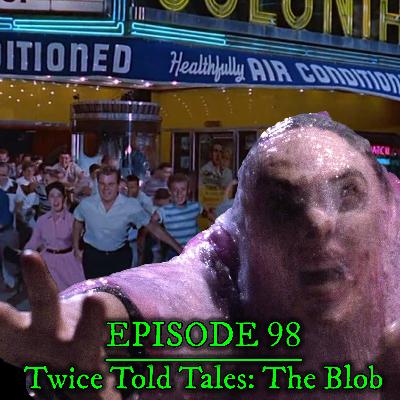
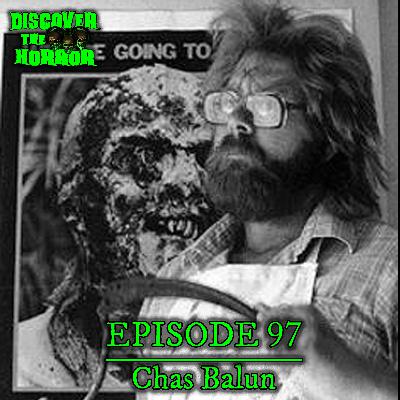
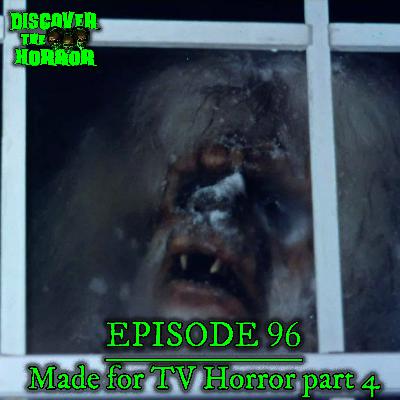
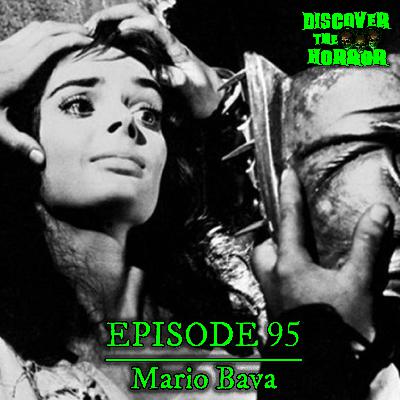
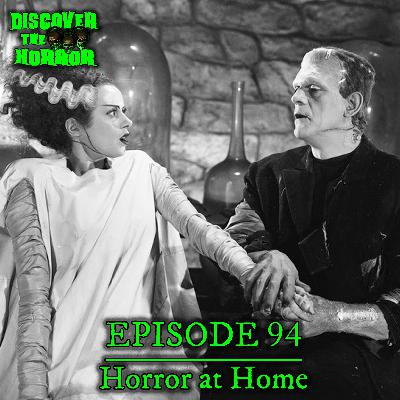




Stop saying "irregardless"!!! 😫
Stop saying irregardless!! 😫